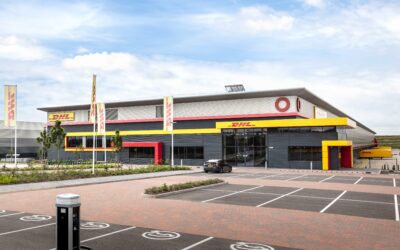Growth can’t last forever, and current market conditions are making the logistics sector face up to uncertainty. Whether dealing with high, low or wildly fluctuating demand, the question of securing profitability has the same answer: flexibility. With scalable and efficient automation solutions like robots and analytics software from Prime Vision, postal, e-commerce and delivery companies have all the tools they need to seamlessly introduce flexibility into warehouse sorting operations.
The demands of change
The convenience of online shopping and the special circumstances of the pandemic have driven a dramatic growth in demand across the logistics sector. These favorable market conditions are changing though. Rising inflation, high interest rates and cost of living crises in countries such as the UK have consumers scrambling to reduce their spending. A recent survey conducted by McKinsey & Company consultants found that nearly eight in ten consumers across five European countries (France, Germany, Italy, Spain, and the UK) would take action to alleviate the ongoing pressure on their incomes.1Among other things, this means less online purchases and deliveries.
Logistics companies can’t just downsize to meet these trends though – the situation is more nuanced. Periods of extremely high demand still define the market, especially during Christmas, Black Friday and Cyber Monday. These disproportionate spikes in demand must be met to secure profitability and safeguard customer satisfaction. Consequently, postal, e-commerce and delivery companies need to inject flexibility into their operations to meet wildly fluctuating levels of demand.

Strategies for fluctuating demand
Fluctuating demand puts businesses in a quandary. With uncertainty regarding the future, companies are less inclined to make large investments in new facilities to increase capacity. However, when peak demand arises, it’s not as easy as adding more racking and hiring more employees. Existing warehouses usually have space constraints and there is an ongoing labour shortage in the sector.
Another approach is to set up smaller scale, temporary facilities that can pop up to meet peak demand and then shut down or relocate when it drops. However, these sites are very limited in terms of space, providing no room for equipment like conveyors or sortation machines. In fact, static infrastructure is far too costly and problematic for a temporary sorting operation anyway.
Thankfully, there are automation technologies available that allow businesses to introduce scalability, and therefore flexibility, into any warehouse operation.

Scaling with the market
There are multiple approaches to scale up and down with demand, but robots are probably the most eye catching. Using onboard guidance systems and information gleaned from barcodes, robots can move parcels to and from any area in a warehouse.
Notably, they take the strain from warehouse employees, with Prime Vision robots able to handle items weighing up to 35 kg. Furthermore, robots are more space efficient than sortation machines and conveyors, allowing businesses to achieve more throughput in smaller spaces. This is great for large warehouses wanting to increase capacity, or smaller facilities making do with what they have.
The clincher for robots in an environment of fluctuating demand is that the fleet can seamlessly expand or contract depending on requirement. During Black Friday, more robots can be added to sort to new destinations, meeting demand in existing spaces without putting unnecessary strain on employees. Following the seasonal rush, the number can be reduced, allowing a more efficient approach to lower demand. When combined with automatic storage and retrieval systems (ASRS) from other suppliers, which maximize available racking space and warehouse capacity, Prime Vision robots give existing facilities the means to seamlessly scale operations.
In terms of temporary facilities, robots are an excellent choice too. As well as making efficient use of space, robots can be transported anywhere. Prime Vision specializes in these relocations for its US customers, moving an entire fleet and setting up new operations in a week. This gives companies complete flexibility while providing a low risk method to test local or meet high demand.
Deciding whether to scale up or down
But how can a business decide to scale up or down with any accuracy? The answer is to use Prime Vision analytics software to turn operational data into actionable insights.
Across a warehouse operation, data is being generated from management systems, scanners, sorting machines, robots, personnel and trucks. For retail and e-commerce companies, sales data from physical and online stores further supplements this. By collating this data and using analytics software to spot trends, businesses can scale operations in the most efficient manner.
This ensures that warehouses are adequately prepared and react accordingly to spikes or falls in demand. Therefore, facility managers can ensure service levels are maintained while maximizing profitability. Nobody can see into the future, however software analytics enable postal, e-commerce and delivery companies to at least make an educated guess, while any short-term decision making can be informed by a data driven approach.

Consistency of service in uncertain times
Fluctuating demand presents many challenges to the logistics sector. However, automation technologies such as robots and analytics software allow operators to maintain a flexible and efficient service throughout. With the support of an automation expert such as Prime Vision, postal, e-commerce and delivery companies can capitalize on every market condition, consistently overcoming the challenges of uncertainty.




